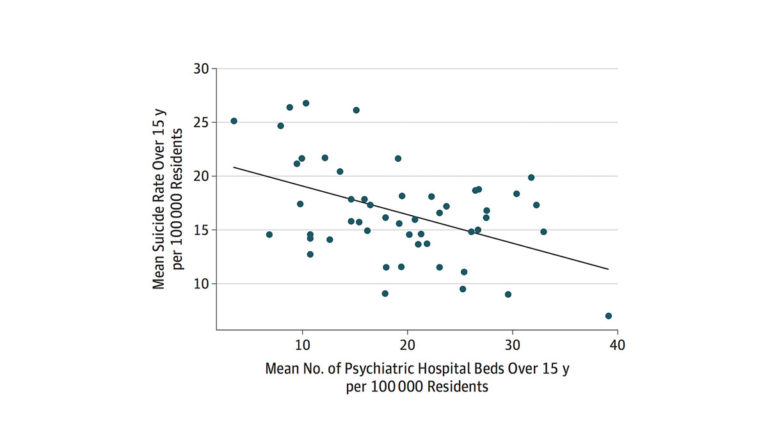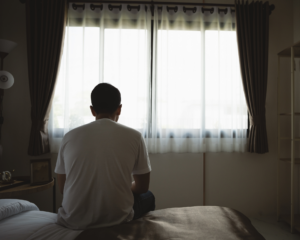Suicide Needs Unmet
A recent JAMA article by Gibbons, et al. demonstrates that the national suicide rate and the number of psychiatric beds have an inverse relationship.

Read Time: 2 minutes
Published:
Over the past 15 years, the U.S. suicide rate has increased by 22%, while the number of psychiatric hospital beds has decreased from 34 to 22 per 100,000 patients. Gibbons, et al., in a recent JAMA article, examined this relationship.

Photo via Robert Gibbons; Kwan Hur, J. John Mann, Suicide Rates and the Declining Psychiatric Hospital Bed Capacity in the United States. JAMA Psychiatry.
The authors demonstrate that the national suicide rate and the number of psychiatric beds have an inverse relationship, though they note that simply increasing the amounts of beds will not necessarily solve the problem. The authors write: “Our findings indicate that attention should focus on determining how existing psychiatric beds are used rather than their absolute number.”
A key question to ask is which types of patients are filling the beds. The authors cite data which points to the fact that only 28.5% of suicide victims were receiving mental health treatment at the time. Are high risk patients making their way to psychiatric beds? By focusing on just the number of beds, the authors note that they “…may miss more fundamental deficits in detecting and treating patients at risk for suicide”, signaling a need for efficiency in public health policy and healthcare delivery, rather than simply more resources.
Databyte via Robert Gibbons; Kwan Hur, J. John Mann, Suicide Rates and the Declining Psychiatric Hospital Bed Capacity in the United States. JAMA Psychiatry.
If you are having thoughts of suicide, call the National Suicide Prevention Lifeline at 1-800-273-8255 or visit suicidepreventionlifeline.org.



